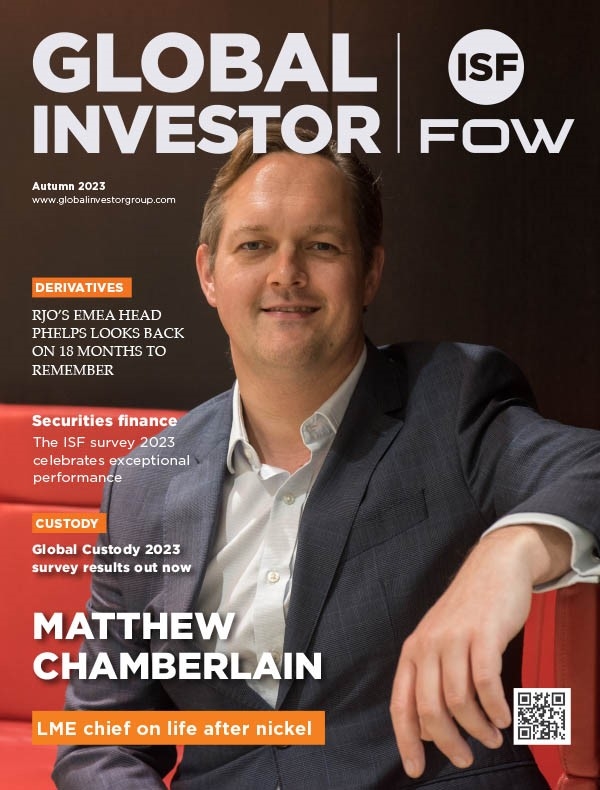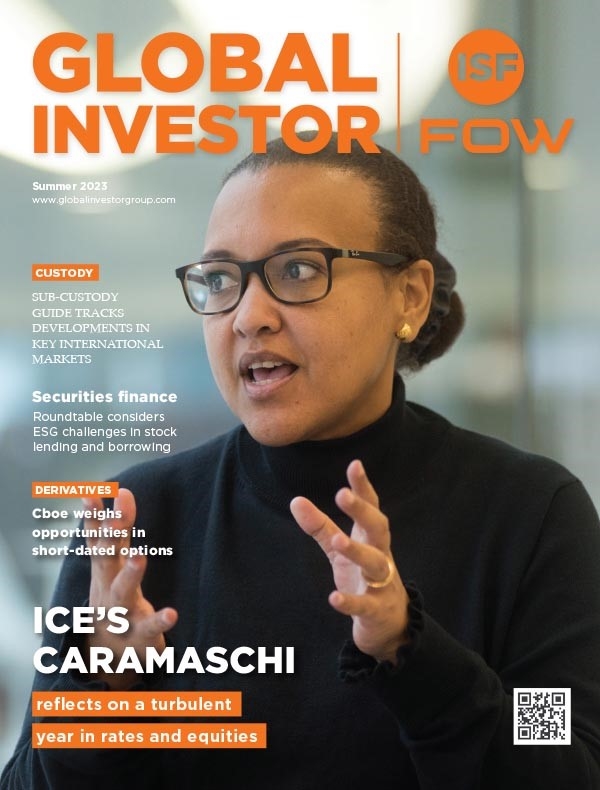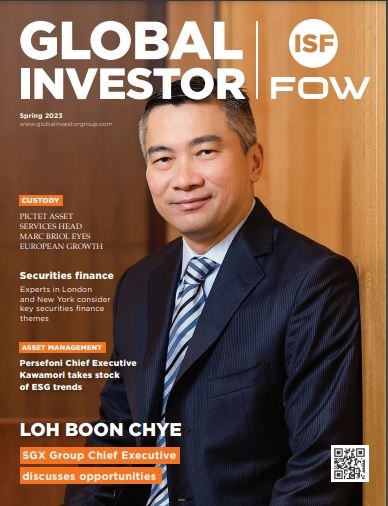Misys: Innovate to outperform
It is clear in the current economic environment that attempting to define a long-term investment strategy that will survive the next drop in crude, or stand up after the latest regulatory reforms come into play, is futile.
Market conditions are changing so rapidly that portfolio managers are compelled to constantly adjust their crosshairs to ensure they hit their targets. That being said what can asset managers do to ensure they future proof their firms and are geared up for growth? The most common answer provided by many buy-side experts is to innovate.
However, innovation can have a plethora of meanings to asset managers, particularly as the industry has historically been very resistant to change. If we take big data and analytics as an example, when compared to the sports betting, online retail or video gaming industry, the asset management sector is drastically behind the curve.
This is surprising considering that data-driven decisions at both the investment and strategic level can really help asset managers to outperform their competitors, particularly when markets are unpredictable.
In their most recent report on global asset management, the Boston Consulting Group cited innovation as a key theme and differentiator in the industry for 2016. While the report mentioned the role of big data, they also highlighted the lack of digital solutions to help managers to improve the way they engage with investors.
Clearly, there is a demand for increased transparency, real-time reporting and assurances of adequate risk controls from the modern-day investor, preferably via their smartphones and tablets, so why aren’t buy-side firms delivering this?
Jason Whitaker, buy-side strategist at Misys, a leading capital markets software specialist, believes there are two main reasons for this. “Whilst most asset managers claim they have pursued a strategic approach to developing their IT infrastructure, the truth is that far too many environments have been built more tactically, in increments over time, as new functionality has been needed.
A new asset class is traded here; a new risk report is desired there. Many of these firms would, if asked, describe their architecture as ‘best of breed’, as they have purchased the best solution to meet any particular challenge on each occasion.
“This is fine in the short-term, but as firms continue to grow organically in this fashion their IT environments become increasingly inconsistent, complex, expensive to maintain and inherently contain large amounts of operational risk. The longer this goes on the harder it becomes to enable change.
This becomes a real problem when firms need to be able to react quickly to unexpected shifts in the investment strategy or meet new investor or regulatory demands. The second reason to resist change is fear of business disruption during the transition from the old way of doing things to a new, improved way.”
The technology asset management firms employ can certainly improve their ability to innovate; however, this is just one aspect. The other area where asset management firms need to innovate is in the way they go to market. Prior to the crisis of 2008, growth in assets under management (AuM) in the industry was relentless and there seemed to be enough business out there for everyone to get a slice of the action.
Fast forward to 2016 and while global AuM is at an all-time high, surpassing pre-crisis levels for the third year in a row, the concentration of those assets is higher than ever, with the leading managers dominating market share.
Moreover, the institutional and retail fees being charged within the industry have been falling year on year across most products, particularly for passive equity with the emergence of readily available ETFs to retail customers, as well as significantly lower fees for structured products on the institutional side.
So with falling fees, rising costs and greater operational complexity, is it any surprise that the big managers are growing exponentially while the smaller niche players are losing market share? “The bigger firms have the capacity to invest in their go-to-market strategy and have all the tools, systems and resources they need to go to market effectively.
This includes carrying out market intelligence to understand who and where the investors are that would buy into their strategies, as well as investing in product development to ensure they have the capabilities and asset class coverage to deliver the products their customers want to invest in.
Other considerations include the way they engage with their customers i.e. what communications do they issue, how do they advertise their products and services, and what is their global PR and marketing strategy.”
All of the above is part of the ‘transformation’ process that Whitaker refers to. “At Misys we work with asset managers to transform their businesses and help them to identify, define and ultimately achieve their target operating model. This is different for every firm depending on what their niche or area of expertise is, what asset classes they trade across and what parts of the business they currently outsource,” says Whitaker.
“Quite often our projects for our FusionInvest product within the investment management industry will involve automating processes that were previously executed manually to reduce trading costs and operational risk while improving efficiency. An asset manager we work with in China was able to reduce the time spent on trade processing by 50% as a result of implementing the straightthrough- processing (STP) capabilities of FusionInvest.”
Another area of the business that the larger asset managers continuously want to improve is in the front office, particularly in the workflows of portfolio managers. “There is an increasing appetite for a more integrated approach to portfolio management, analytics, risk and pre-trade compliance from the modernday portfolio manager” says Whitaker.
“While the majority of smaller asset managers that we work with are focussed on improvements to middle- and back-office workflows, the leading firms usually prioritise improvement in the front office first before thinking about the rest of the investment process.
“A main driver for this is to enable portfolio managers to get off MS Excel and onto a more robust platform with enhanced portfolio management capabilities and analytics to ensure they have the tools to make the best investment decision in any given scenario.
Moreover, having a system in place like FusionInvest that provides a consistent, real-time trade and position record with accurate cash management that starts at the portfolio management level enables firms to achieve an investment book of record (IBOR).
This data then drives other important areas of the business such as risk, compliance, collateral management and accounting ensuring these functions are all optimised across asset classes.”
On boarding new asset classes and having the best pricing and risk models behind them is also vital to expand the range of products you can go to market with. In recent years, asset management companies have been moving away from active core products into more diversified strategies to differentiate themselves in the market and be in line with investor expectations and demand.
The use of multi-asset strategies, alternatives and solutions such as liability-driven investment (LDI) and target-date funds for pension mandates is on the rise year on year and it is the larger firms that are offering these products to investors to increase their market share. “Typically this is because they are sophisticated enough with regards to their asset class coverage and technology to offer these products and solutions at a cost that the smaller players cannot compete with,” says Whitaker.
“This was certainly the case with the China Re Asset Management Company. They were able to grow their AuM by 300% over a four year period without increasing their operational head count after adopting FusionInvest by expanding the range of products they could offer their clients and having an efficient, robust and scalable investment process behind it to ensure trading costs remained low.”
It is no secret that trading costs are rising for more exotic instruments as a result of wave after wave of regulation and that most firms’ IT systems are not equipped to handle the operational burden that trading complex asset classes often provides.
“Transparency is a very valuable commodity in the asset management industry today, especially in the post-regulatory environment,” according to Whitaker.
“Being able to access consistent data from different functional departments within an asset management firm can really help firms to be more agile, responsive and efficient when it comes to dealing with both international and local regulations.”
All the points raised in this article form part of the transformation that has already started within many of the bigger firms and will continue to gain momentum in the next few years. He concludes: “Misys is helping firms across the financial sector to become more resilient, more efficient and more competitive.
Our solutions, together with the expertise of our consulting partners, can help firms to define their target operating model and achieve their strategic vision so they can remain competitive and ensure their long-term profitability, regardless of where they find themselves today.
Furthermore, our componentised solution does not force asset managers to do everything ‘our way’. FusionInvest provides a level of flexibility and adaptability that is not present in other mainstream solutions.”

To discover how Misys FusionInvest can work for you visit www.misys.com/fusioninvest
Found this useful?
Take a complimentary trial of the FOW Marketing Intelligence Platform – the comprehensive source of news and analysis across the buy- and sell- side.
Gain access to:
- A single source of in-depth news, insight and analysis across Asset Management, Securities Finance, Custody, Fund Services and Derivatives
- Our interactive database, optimized to enable you to summarise data and build graphs outlining market activity
- Exclusive whitepapers, supplements and industry analysis curated and published by Futures & Options World
- Breaking news, daily and weekly alerts on the markets most relevant to you



